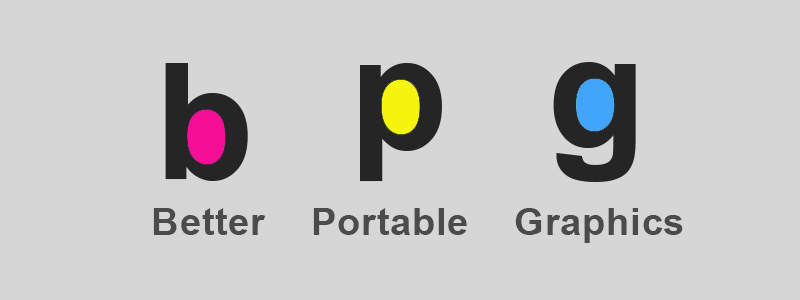
BPG, which stands for Better Portable Graphics, is a new image format, whose aim is to replace the well-known JPG. This image format has been developed just last year by a well-known software engineer, Fabrice Bellard, who is also the one to create ‘ffmpeg’ – a widely used platform for media processing.
BPG is seen to give better results than JPG in terms of quality even in a smaller file size. This is why it can be considered as a replacement for JPG. But, this is not all. There is a lot added to this new image format that can help it win over JPG in the future. Let’s have a look.
What are the advantages of BPG?
- The biggest advantage is that BPG can deliver same image quality as JPG at about half the file size. BPG gives clear images with sharp edges, which JPG doesn’t bring out so well. When images are heavily compressed, BPG formats show a marked quality as compared to JPGs, which lack sharpness when images are reduced to smaller sizes.
- Giving the same quality image at half the size means taking up half the memory on a device. Thus, it allows faster loading times for web users and leaves more room on users’ hard drives.
- BPG also brings an alpha channel meaning that it is capable of handling transparency – an element that JPG can’t support. BPG also has the ability to render 14 bits per colour channel, while JPG can render only 8 bits.
- BPG also supports GIF-style animations of high quality, which are smaller in size than its MP4 formats from which they are created. This means that with BPG, you can create a GIF that is almost half the size of the equivalent MP4.
- Almost all major browsers known to users support BPG. This is because Fabrice Bellard implemented the BPG decoder in JavaScript, which is supported in all major browsers. This means that there is no need to update the browser version or install a plug-in in order to use BPG images.
What are the disadvantages of BPG?
There is nothing perfect in the universe. Everything has its own pros and cons, and so is the case with this new image format. BPG also has its own drawbacks inspite of such amazing advantages over JPG.
- BPG images lack native support, which means that they take time to decompile. The larger the file size, the longer the decompiling time. At present, a BPG file takes around 8 to 10 seconds to decompile.
- BPG animations do not support sound. Although this point can be overlooked because BPG is more an image format than a video but, this is still an element it lacks.
- BPG is created by using HEVC video compression technology. This is patented by MPEG LA, the company that owns the H.246 video codec. This means that the company can charge royalties on hardware as well as software that has BPG decoders built-in. This will hinder browsers from supporting the BPG format.
You can see how well the advantages of BPG outdo its disadvantages. But still, do you think it will be easy for BPG to replace JPG?
JPG is a format being used since almost 20 years and it still dominates the Web. There have been many alternatives that have tried to replace it but it has been very difficult to win over this popular format. Google also tried to replace JPG with its WebP four years ago but, it couldn’t gain much support.
The thing is that designers are simply used to the JPG file format since so many years and have also easily overlooked its drawbacks. It seems difficult to get designers to switch from JPG to any other format. We will just have to wait and watch if BPG can succeed in its plans or will become another niche file format like WebP.


